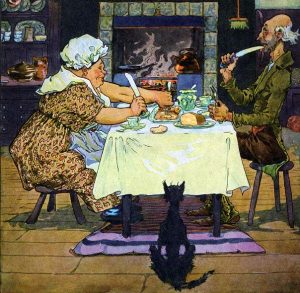
Most of us have heard the story of Jack Sprat in our encounters with classic childhood nursery rhymes. But what is the rhyme history of Jack Sprat? Where did it come from? Many of us have wondered about the stories that we heard as children and that we now read to our own children.
The earliest publications of Jack Sprat dates back to 1639 in John Clarke’s collection of sayings. But even this had its background dating back to the 16th Century when Jack Sprat was a term used to describe people of a smaller stature. Looking into the rhyme history of this and many others, they all seem to stem from proverbs, parables and sayings, this one in particular having the specific background of being a mid-17th century English proverb.
Like many others rhymes in history, the language has been adapted from its original format to flow better to the current vernacular and modern usage.
So where are we most likely to encounter the tale of Jack Sprat and his wife and their interesting dining habits and their relationship? More often than not, if you have a book of nursery rhymes on your child’s bookshelf, you can go through it and you will no doubt encounter this delightful little tale of opposites attracting and the dynamic of a strong relationship.
Since Jack could eat no fat and his wife could eat no lean, meaning anything other than the fat of the meat, between the two of them they always clean both of their plates and will never leave leftovers or have waste. Like many nursery rhymes and other fables, it sends a positive message to our children, this one about not being wasteful.